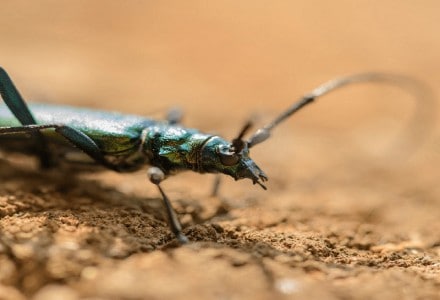
Musk Beetle Facts
- Firstly, the distinctive term Musk Beetle serves as the name for a specific species of moderate-sized longhorn beetle. This rather fascinating insect evolved as solely endemic to a rather highly restricted portion of Europe.
- Secondly, this rather remarkable invertebrate derives its name from the odor it sometimes emits. However, it rarely does so unless it finds itself under threat. Most who encounter it describe it as a musky smell.
- Fortunately for this insect, a hopeful future appears to be on the horizon. That’s because conservation efforts have been put in place by various organizations in its endemic range, to help ensure its survival.
- Most notably, the Cornwall Wildlife Trust currently stands at the forefront of these wholly worthwhile efforts. Yet, it nevertheless remains at risk from such dangers as habitat loss and climate change, like many creatures.
Related Articles
Tansy Beetle Atlas Beetle Goliath Beetle
Musk Beetle Physical Description
First of all, the Musk Beetle remains most easily distinguished by two defining characteristics. The first of these consists of its relatively long antennae. These stand out as much longer than average, compared to related species. Its antennae sometimes grow longer than the entire body of the insect. This averages about 1.6 in (4 cm).
And the second of these distinguishing factors consists of its remarkable color. That’s because the creature typically presents a bright metallic green color. However, although exceeding rare, the insect does occasionally develop other colors.
The fascinating species also exhibits a slight degree of sexual dimorphism, like many species. But, in its case, this trait typically occurs in relation to antennae length. Those of the female usually grow about the same length as the body. Yet, those of the male Musk Beetle generally develop slightly greater in length.
- Kingdom: Animalia
- Phylum: Arthropoda
- Class: Insecta
- Order: Coleoptera
- Family: Cerambycidae
- Genus: Aromia
- Species: A. moschata
Musk Beetle Distribution, Habitat, and Ecology
Most of all, the somewhat odiferous Musk Beetle occurs in several countries scattered throughout Europe. But, this particular insect most commonly appears in the country of Great Britain. However, even there, the numbers of this interesting invertebrate remain quite scarce.
The insect does present inhabit several types of habitat, though not in great numbers in any region. But, it does show a decided preference for wetland areas. In this environment, as well as in others, it also most commonly lives on the leaves of trees. Further, for undetermined reasons, it prefers leaves of willow trees.
In addition, it is in this location that the larvae of the species spends the majority of its life cycle. Also, this life cycle often happens to be rather prolonged, sometimes lasting as much as 3 years. In this, the invertebrate also stands out from most related species.
Species Sharing Its Range
Tansy Beetle Common European Viper Long Eared Owl
Check out our other articles on Breathtaking Primates of the World, Royal Panaque, Blood Falls, Rainbow Eucalyptus, Olive Ridley Sea Turtle, Eastern Tent Caterpillar, Little Penguin

